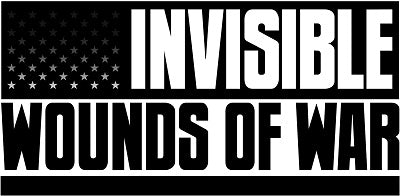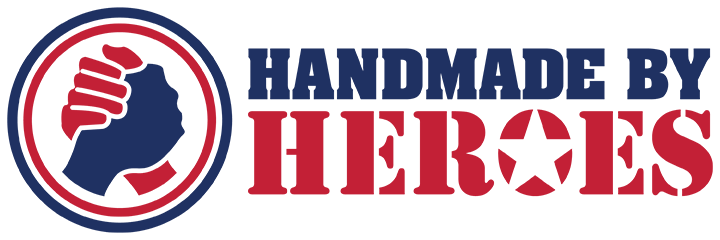Sizing Guide
GUIDE TO MEASURING YOUR WRIST FOR ADJUSTABLE BRACELETS

GUIDE TO MEASURING YOUR WRIST FOR BUCKLED BRACELETS

September 18, 2017

When veterans return home from service, their battles are far from over. In fact, it is just the beginning and it will continue for a long time unless it is addressed properly.
The long term effect of the damages that were brought about by these veterans’ experiences when they were in active duty and away from their families go far beneath what the eye can see. Veterans’ that have already left the battlefield have to deal with many problems as a result of their time in service. From mental to physical and psychological health issues, these veterans sometimes suffer more when they return home than when they were still in the field risking their lives defending their country and its people.
The Post-traumatic Stress Disorder (PSTD) that veterans mostly suffer from when they come home from service usually goes unnoticed by the public and also by their families.
More than 1.6 million U.S. troops have been deployed in different military operations in Iraq and Afghanistan since 2001 and these soldiers have been subjected to long and stressful periods of combat-related activities. The mental health issues of these soldiers – active or retired – should be taken seriously and with great importance by the government. By doing this, the government will be ensuring the readiness of the military in its future operations and it will also serve as a platform in honoring those military men and women who have bravely served the nation.
There are many battles that confront our returning servicemen when they come home from service. Here are some of them.

According to a study conducted by the Journal of Pain, more than 100 thousand veterans that were deployed from the Gulf War more than 20 years ago suffer from chronic muscle pains around their body. These veterans also suffer from a lingering pain in their knees, necks, backs, and shoulders.

The trauma of war can lead to Post-traumatic Disorder (PSTD) in soldiers who were at the thick of the action when they were still in active duty. According to the study conducted by the Archives of General Psychiatry which was published in their journal, they found out that 1 in 10 war veterans developed serious mental problems, violent behavior, depression, and alcoholism when they come home after their service in the military. The study also found out that 8.5-14 percent of these former military servicemen have seriously impaired daily functions due to depression and PTSD. Veterans that suffer from PTSD also have a greater risk of developing dementia. This was also according to the study that was done by the Archives of General Psychiatry.

In today’s modern warfare, using toxic chemicals are already an accepted fact. Using chemicals may be an effective strategy for winning a battle, but the effects to the soldiers when they are exposed to these chemicals are also life damaging. When the American Heart Association conducted a research on the effects of chemicals that were used during the Gulf War 20 years ago, they found out that the war veterans that were exposed to these chemicals suffered and are still suffering to this day from heart rhythm abnormalities, enlarged left ventricle, and reduction in the pumping of the heart.

Even if all military personnel are given vaccinations before they are deployed for duty, many of them still suffer from infectious diseases that they have acquired while they were still in duty when they come back home after their service in the military is finished. The sad thing is, most of the infections that these veterans suffer from do not have available vaccines in the U.S. This is according to the U.S. Department of Veterans Affairs. Infections such as brucellosis may persist for years; campylobacter jejuni that causes fever, diarrhea and abdominal pain; and the coxiellaburnetti that can cause heart inflammation. But the most common and most brutal infectious disease that most veterans suffer from is the LEISHMANIASIS. Leishmaniasis is a parasitic disease that is caused by the bite of a sand fly that is native to the Middle East. The veterans that were infected with the disease suffer from fever, headaches, weight loss, anemia, muscle pain, and enlargement of the spleen. This disease is fatal if it is not treated early.

According to the VA, hearing loss and impairment are common among former military service personnel who have retired from the military service. The ringing and buzzing in the ears that most veterans suffer from are the results of the harmful noises from gunfire, noisy engine rooms and aircrafts, and the noise from heavy weapons that these former service men were exposed to during their time in the military. Some veterans also suffer from vibration exposure which was the result from regularly working with machinery. Vibration exposure usually leads to lower back pain and numbness of fingers which are irreversible.

According to the National Academy of Science, Traumatic Brain Injury or TBI is the signature invisible wound of fighting in Iraq and Afghanistan. TBI disrupts brain function that leads to cognitive issues like language disability, shorter attention span, and inability to process information. Irritability, anxiety, lack of motivation, depression, headaches, and memory loss are also caused by TBI. The long term effects of TBI on veterans are difficult to ascertain.
When a returning serviceman comes home after his mission is over, it is highly recommended that he undergoes a PSTD, Depression, and TBI test to check if he is suffering from any of these conditions which comes from being exposed to the military life for so long. The effects of PTSD, Depression, and TBI when they are not addressed properly can have far-reaching and damaging effects not only to the returning service man but also to his friends and most especially to his family.
The combat trauma that these soldiers experience can also lead to dire consequences. It can destroy relationships, end marriages, and sometimes could lead to suicidal tendencies.
In truth, healing the invisible wounds of our returning service men is a difficult job. The VA’s health system has been in shambles and in turmoil these past few years and finding a direct solution to the health problems of our returning veterans is just like trying to locate a needle in a haystack. But even so, the most important thing in helping a soldier fight his battle upon returning home from service is to acknowledge his sacrifices, heroism, and bravery. The love and support of his friends and family can also lighten the burden that these heroes carry when they come home after their military services have ended.
Comments will be approved before showing up.
January 08, 2018
January 01, 2018
November 11, 2017 1 Comment
This section doesn’t currently include any content. Add content to this section using the sidebar.
This section doesn’t currently include any content. Add content to this section using the sidebar.


